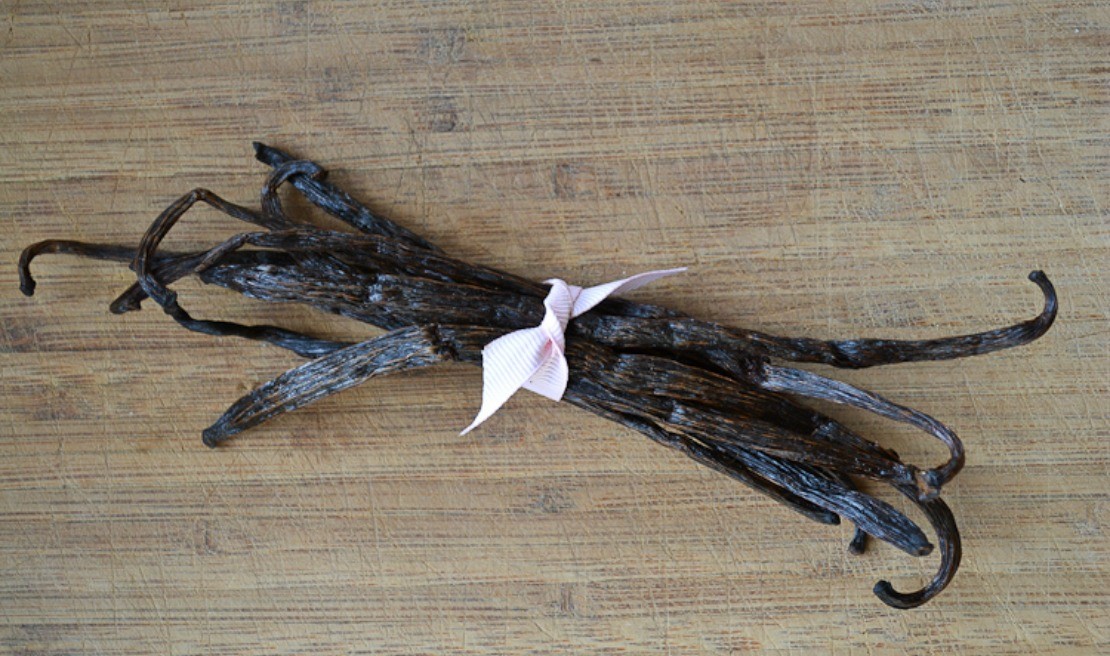
3 Must-Try Vanilla Recipes
Mmm…vanilla. Its sweet, perfumed aroma and flavor are known and loved around the world. The rich but subtle complexity of vanilla’s flavor is exotic and luxurious, yet at the same time comforting and gentle. No wonder it has been celebrated and used for hundreds of years, first cultivated by the Totonac Indians in eastern Mexico, then adopted for use in ritual and drink by the Aztecs upon conquering the Totonac in the fifteenth century, and celebrated since the sixteenth century in Europe, where it was introduced by Spanish conquistador Hernan Cortes in 1520. While it gained a foothold as a flavoring for cacao drinks, it quickly became evident that it was a very pleasurable flavoring powerhouse unto itself, and has been used since to add its decadent flavor to cakes, confections, syrups, puddings, and ice cream, and its sweet, heady scent to perfumes.
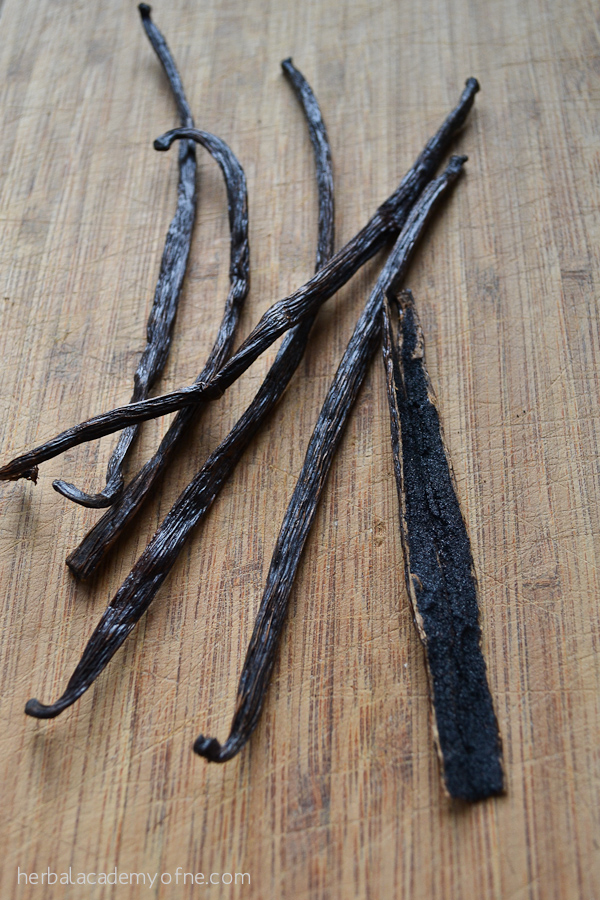
Vanilla’s Background
The vanilla bean is the fruit of Vanilla planifolia, an evergreen vine orchid native to Mexico and grown in the tropical regions of such countries as Madagascar, Indonesia, Mexico, Papua New Guinea, Tahiti, India, and Uganda. Vanilla has aerial roots that cling to trees, thick, fleshy leaves, and lovely white, cream, or yellow trumpet-shaped blossoms that bloom only for one day (Menon and Nayeem, 2013). In its native Mexico, vanilla was pollinated by an indigenous bee (Fortini, 2005), but when vanilla began to be grown in other regions of the world without its natural pollinator, hand pollination became necessary to produce the bean. This, along with the lengthy curing process necessary to produce the oily, pliable, dark brown to black bean, explains why vanilla beans are so very expensive.
While used widely as a flavoring agent and a perfume, vanilla’s medicinal uses are largely overlooked. The Eclectic herbalists of the early 1900s lauded vanilla as an aromatic stimulant, said to “promote wakefulness, increase muscular energy, and powerfully stimulate the sexual appetite” (Felter, 1922), and was also used “to exhilarate the brain” and in the case of “hysteria, rheumatism, and low forms of fever” (Felter and Lloyd, 1898). Keep in mind that in the terminology of the times, hysteria often referred to the emotional symptoms related to premenstrual syndrome (PMS), although not exclusively (Winston, 2003). This gives us a clue towards vanilla’s actions as an anti-depressant and hormone balancer. As far as “exhilarating the brain,” vanilla is purported to sharpen the mind and strengthen memory (McBride, 2010). Vanillin, which is the primary chemical constituent in vanilla (Hoffman, 2003), appears to have anti-cancer and anti-mutagenic action in cells, while other vanilla compounds show antioxidant activity (Shyamala, 2007). As a carminative, vanilla helps relax the digestive system and soothe upset caused by gas.
It’s interesting that the Eclectics considered vanilla so stimulating and didn’t mention its dual action as a nervine. After drinking a cup of vanilla tea, one is bound to feel infinitely more relaxed, euphoric, and blissful. Perhaps this is part of its aphrodisiac effect as well — once vanilla calms stress and soothes tension, one is able to focus on other more sensual and pleasureful pursuits.

3 Vanilla Recipes
Here are three ways to incorporate vanilla into your daily rituals: as a relaxing tea, in homemade vanilla extract, and in a sipping cordial. All delicious, and all placing the sweet, exhilarating, and desirable qualities of vanilla on center stage. Find certified organic and fair-trade vanilla beans at Mountain Rose Herbs for your vanilla recipes.
Vanilla Tea is lovely for a sweet, calming, and uplifting midday break or for winding down in the evening. In this case, a little vanilla bean goes a long way!
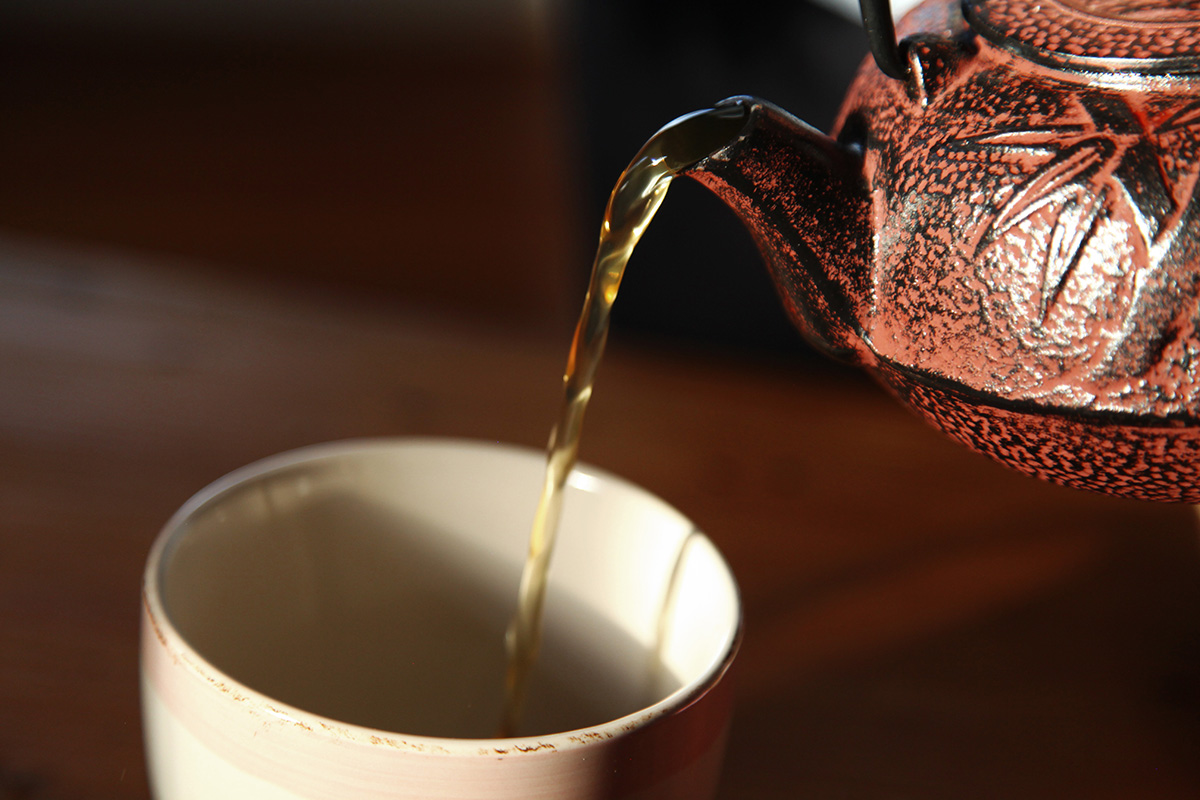
Vanilla Tea
1 vanilla bean
6 quarts water
- Split the vanilla bean lengthwise using a knife.
- Place in a large pot with water.
- Simmer covered on very low heat for 15-20 minutes.
- Pour into cups and enjoy!
Homemade vanilla extract adds its perfumed, complex flavor to hot and cold drinks, baked goods, confections, smoothies, yogurt, etc., etc., and etc., and is a lovely (and easy) gift to make for the chefs or gourmands in your life. They will appreciate its high quality and excellent flavor.
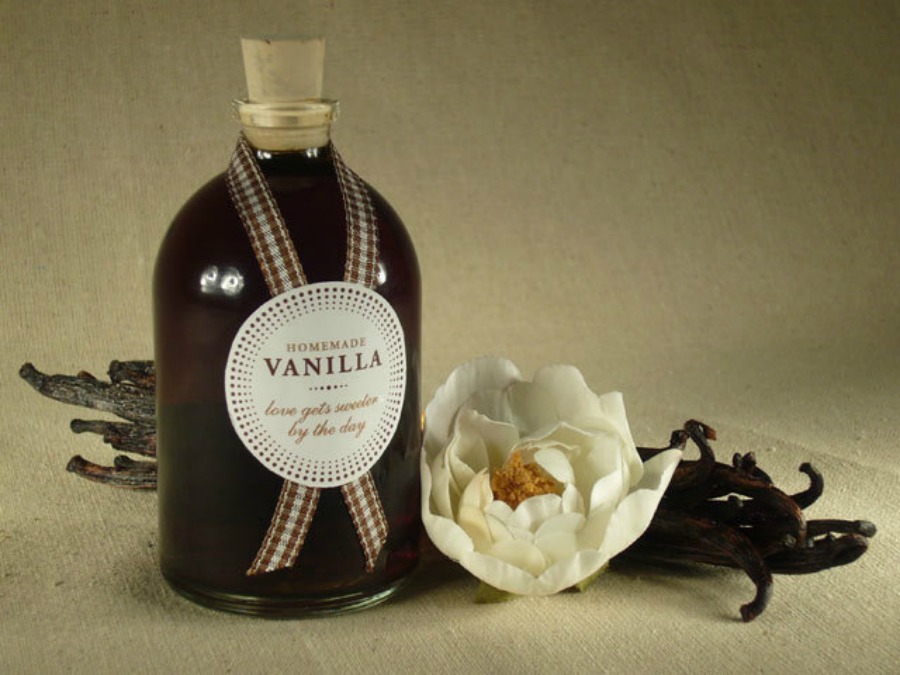
Vanilla Extract
5 vanilla beans
1 cup vodka, brandy, bourbon, or rum (80 proof, or 40% alcohol)
8 ounce beautiful glass bottle or jar
- Split vanilla beans lengthwise using a knife. Chop crosswise into smaller pieces if needed to fit them into the bottle.
- Place prepared beans into the bottle.
- Pour the alcohol into the bottle and cap.
- Let steep in a cool, dark place for 4-6 weeks, shaking every few days.
- If giving as a gift, strain extract and pour into a clean bottle or jar with a fresh vanilla bean. If using at home, you can leave the vanilla beans in the bottle and add more alcohol when the extract gets low, letting them steep again to make more extract. In this case, have two bottles of vanilla steeping so that when one gets low, you can alternate use between the other.
Damiana Vanilla Cordial is a sensual and aphrodisiac sipping elixir, both pleasureful and gently stimulating. It’s nice as a gift, or perhaps to keep just for you and your loved one.
Damiana Vanilla Cordial
Adapted from Botanica Erotica by Diana De Luca
2 vanilla beans
1 ounce dried damiana leaf
1 cup brandy
1.5 cup spring water
1 cup honey
glass bottle or jar
- Split vanilla beans lengthwise using a knife. Chop crosswise into smaller pieces if needed to fit them into the bottle.
- Add damiana with vanilla beans to the jar.
- Cover with brandy.
- Let steep for 2-4 weeks, shaking every day or two.
- Strain the brandy and place it in a clean jar, saving the plant material.
- In the original jar, combine plant material and spring water, and let steep for 3 days.
- Strain the spring water extract, composting the plant material.
- Gently warm spring water extract with honey just until combined.
- Combine the spring water/honey mixture with the alcohol extract in a beautiful jar.
- Age for one month before enjoying as a sipping cordial.
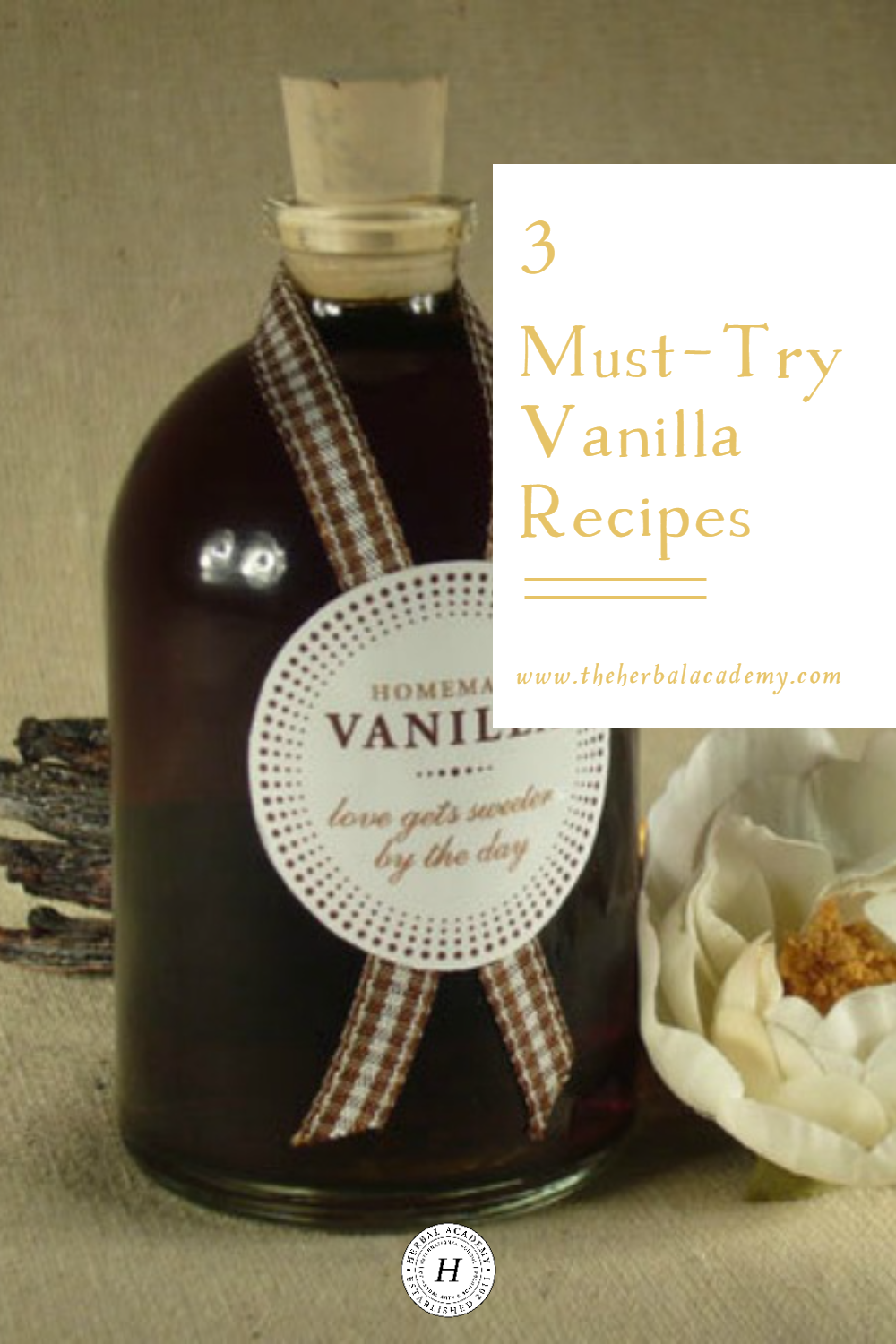
REFERENCES
De Luca, Diana. (1998). Botanica Erotica: Arousing Body, Mind, and Spirit. Rochester, VT: Healing Arts Press.
Felter, Harvey Wickes. (1922). The Eclectic Materia Medica, Pharmacology and Therapeutics. Retrieved on November 7, 2014 from http://www.henriettes-herb.com/eclectic/felter/vanilla.html.
Felter, Harvey Wickes, and Lloyd, John Uri (1898). King’s American Dispensatory. Retrieved on November 7, 2014 from http://www.henriettes-herb.com/eclectic/kings/vanilla.html.
Fortini, Amanda. (2005). The White Stuff. Retrieved on November 10, 2014 from http://www.slate.com/articles/life/food/2005/08/the_white_stuff.html.
Hoffman, David. (2003). Medical Herbalism. Rochester, VT: Healing Arts Press.
McBride, Kami (2010). The Herbal Kitchen. San Francisco, CA: Conari Press.
Menon, Shruthi and Nayeem, Naira. (2013). Vanilla Planifolia: A Review of a Plant Commonly Used as Flavouring Agent. Int. J. Pharm. Sci. Rev. Res., 20(2), May –Jun 2013; n°42, 225-228.
Shyamala BN, Naidu MM, Sulochanamma G, Srinivas P. (2007). Studies on the antioxidant activities of natural vanilla extract and its constituent compounds through in vitro models. J Agric Food Chem. 2007 Sep 19;55(19):7738-43. Epub 2007 Aug 24.
Winston, David. (2003). Eclectic and Botanical Therapeutics for Mental Health, Abridged Version. Journal of the American Herbalist Guild, Vol. 3, #2, 2002.







